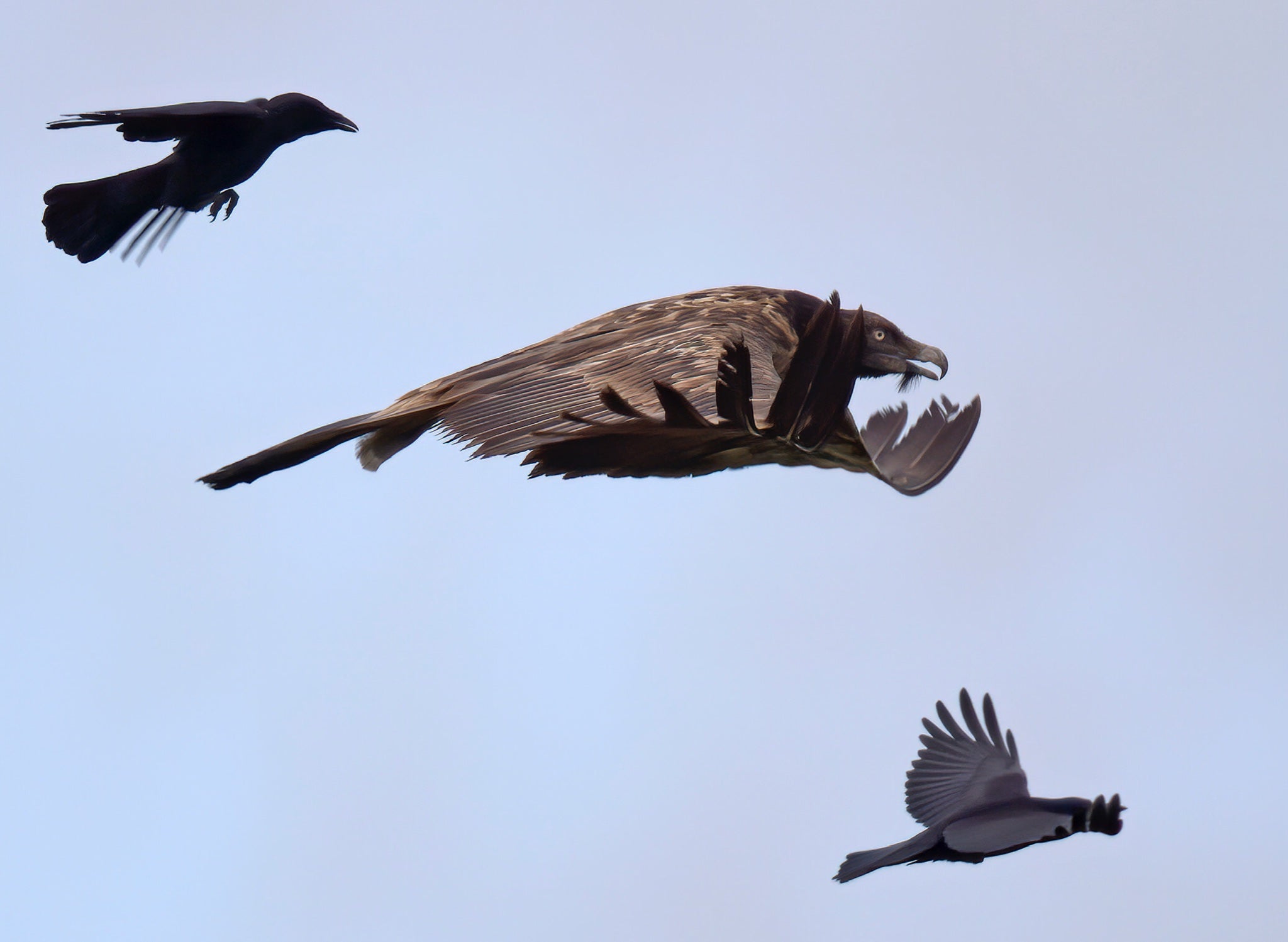Rare bearded vulture leaves UK for France after summer soaring over Peak District
Fewer than 20 vagrant bearded vultures have roamed into northwest Europe in the past 35 years, says RSPB

Back in July the unexpected arrival in the UK of a bearded vulture surprised and delighted bird spotters, many hundreds of whom immediately travelled to the hills of the Peak District - where it had apparently taken up residence - in a bid to catch a glimpse of the enormous creature.
With a wingspan of 2.5m (8.2ft), the vulture, nicknamed “Vigo”, has been a conspicuous guest in Britain. It is even bigger than the white-tailed eagle - the largest native bird of prey in the British Isles - which are known as “flying barn doors” due to their 8ft wingspan.
But after four months of soaring over the Lakes, along with visits to the skies over Lincolnshire, Cambridgeshire and Norfolk, Vigo has headed south and was seen over the sea on the East Sussex coast on Thursday, heading for France.
It appears she - and it is a she - is heading home. Genetic testing done on a pair of the bird’s feathers found by an eagle-eyed bird spotter in Yorkshire, named David Ball, has revealed that Vigo is a female which hatched last year in the French Alps.
Steffen Oppel, senior conservation scientist at the RSPB told The Independent it is “extremely rare for a bearded vulture to be seen in the UK”.
He said: “These birds occur naturally in mountains, at least 400 miles away in the Alps and only around 20 vagrant bearded vultures have roamed into northwest Europe in the past 35 years. But because vultures rarely cross water bodies, this is only the second record of bearded vultures in the UK in living memory, with the previous one being a captive-bred and released bird in 2016.
“As populations in the Alps and southern Europe recover from persecution in previous centuries, it may become a slightly more frequent visitor in the future but unlikely to reach more than one to two birds a year.”
According to the Vulture Conservation Foundation (VCF), which carried out the genetic tests, Vigo was born in a wild nest in the Haute-Savoie region in southeast France.
The organisation has been releasing captive-bred bearded vultures in the Alps since 1986, with the aim of bringing the species back to the region after it was hunted and poisoned to extinction.
There are now more than 60 breeding pairs in the Alps, but the bird remains classified by the IUCN as “near threatened”.
"The secret for the success of the Bearded Vulture reintroduction projects is to tackle the main threats such as poisoning, collision and shooting, which have been reduced in key areas in the Alps,” said Louis Phipps, VCF's research officer based in the UK.
He added: “The mortality records that we receive every week show that threats still exist across the range of vultures in Europe, while the population increases reflect the success of conservation efforts."
Despite its awesome size, bearded vultures pose no threat to livestock, and instead feed on scavenged bones.
Vigo’s visit to the UK is only the second such recorded incidence, with sightings of another bearded vulture over Dartmoor and Monmouthshire in 2016.
Q&A with the RSPB’s Steffen Oppel:
Could the bird's visit signal the UK may become a new foothold for the species?
It’s unlikely that the UK will become a new foothold for the bearded vulture. They generally live in very high mountains and warmer climates, and most vultures travel by passive soaring, using warm air rising to gain elevation and then glide long distances without beating their wings. In the UK, such thermals are not very strong, so it will be an energetically very demanding place for vultures to live in and search for food.
What, if anything did we learn from the vulture's stay?
Just how resourceful and tough these birds are! Although the bird is hundreds of miles outside its range, and neither the weather nor the habitat are similar to where it usually lives, it somehow managed to survive several months in apparently good health.
Is it likely the bird will return?
It’s not likely Vigo will return. Other juveniles may visit, but young vultures roam around vast areas and ultimately return to the place from where they originated - in the case of Vigo these are the French Alps.
What are some of the best bearded vulture facts?
Probably the fact that they eat bones - something that most other scavengers will leave behind! Your dog will chew on bones and rip every last bit of flesh off the bone, but only the bearded vulture can actually digest and extract nutrients from the bones. When the bones are too big for them to swallow, they drop them onto rocks to break them.
This is also the rarest of the four vulture species in Europe - simply because they were ruthlessly persecuted and hunted to extinction because people believed that they steal sheep and children (which is not the case).
Subscribe to Independent Premium to bookmark this article
Want to bookmark your favourite articles and stories to read or reference later? Start your Independent Premium subscription today.

Join our commenting forum
Join thought-provoking conversations, follow other Independent readers and see their replies